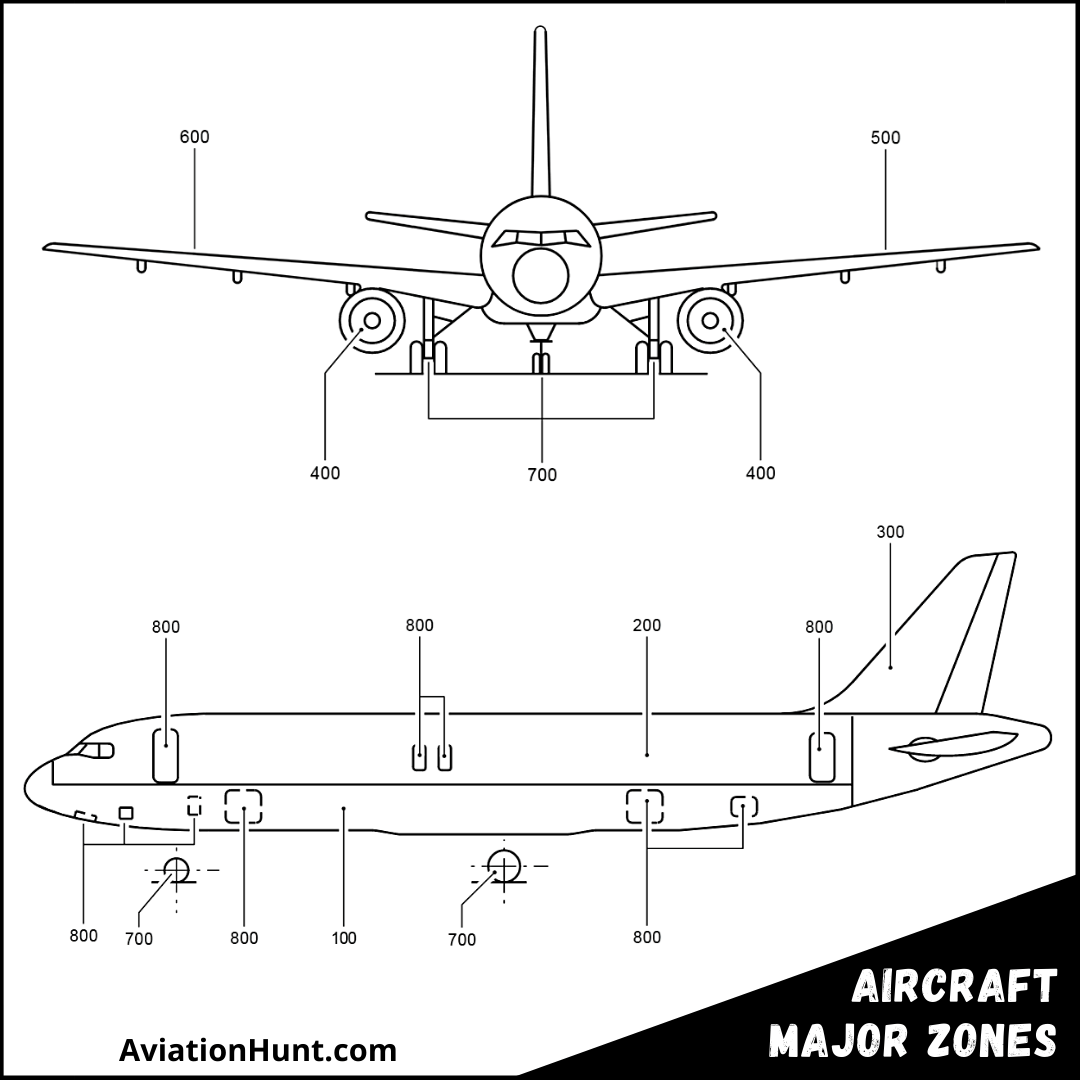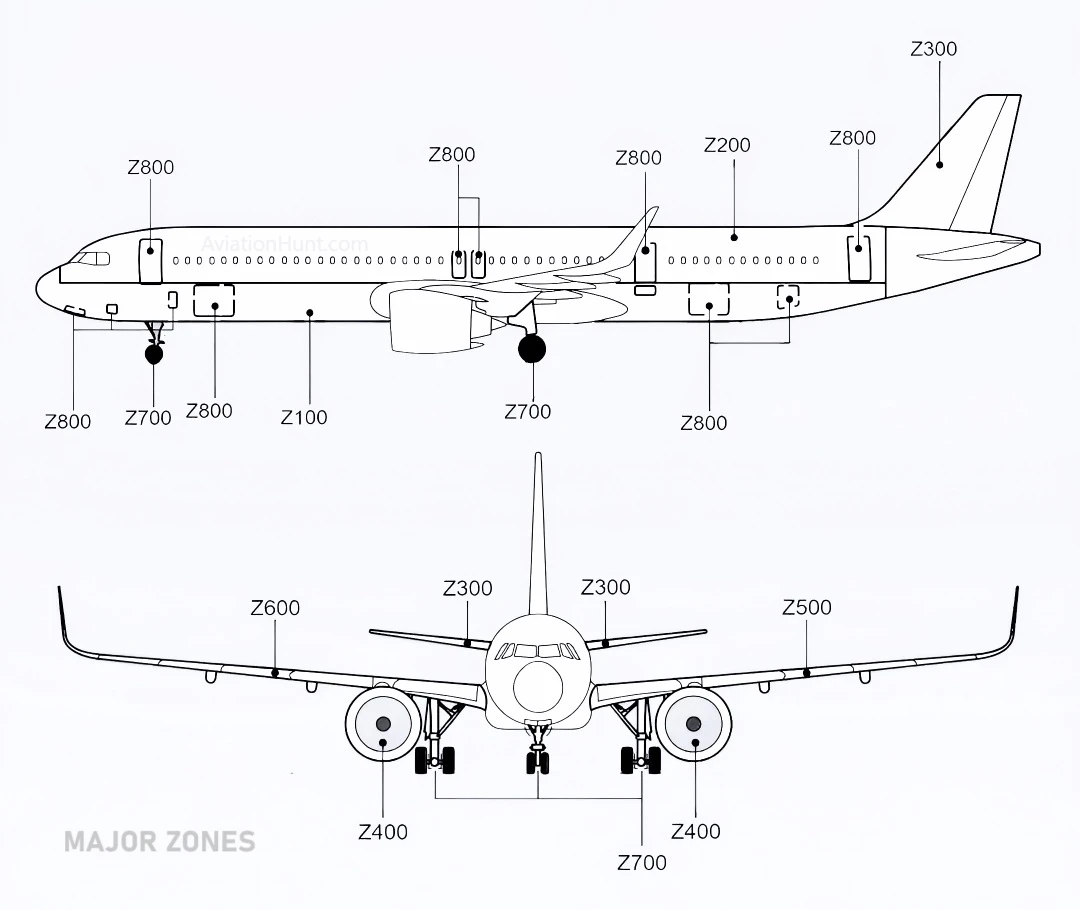Aircraft zoning makes identification easier during maintenance and repair of aircraft.
The zoning of large aircraft is specified by the Airline for America (A4A) in the ATA-100 Specification. These large areas or major zones are further divided into sequentially numbered zones and subzones. A zone is identified by one of three indicators, depending upon whether it is a major zone, major sub-zone, or simply a zone.
Aircraft Major Zones


Major zones are identified by three-digit numbers as follows:
| Major Zone | Area |
|---|---|
| 100 | Lower half of the fuselage to the rear pressure bulkhead |
| 200 | Upper half of the fuselage to the rear pressure bulkhead |
| 300 | Empennage, including fuselage aft of the rear pressure bulkhead |
| 400 | Power plants and struts or pylons |
| 500 | Left-wing |
| 600 | Right-wing |
| 700 | Landing gear and landing gear doors |
| 800 | Doors |
| 900 | Reserved for uncommon differences between aircraft types not covered by standard series numbers |
9 Major Zones Explained
Aircraft are divided into major zones for ease of identification, maintenance, and repair. These zones are standardized across the industry, with each zone having a specific code assigned to it.
- 100 – Nose: This zone encompasses the forward fuselage section, including the radome (which houses the radar antenna), cockpit, and avionics bay.
- 200 – Fuselage: This zone includes the passenger cabin, the galley, and the lavatories. It is further divided into subzones, such as the forward fuselage, the mid-fuselage, and the aft fuselage.
- 300 – Empennage: This zone includes the tail section of the fuselage. This zone includes the horizontal and vertical stabilizers, as well as the rudder and elevators.
- 400 – Powerplant: This zone includes the engines, as well as the nacelles and pylons.
- 500 – Left Wing: This zone includes the left wing, the left aileron, and the left flap.
- 600 – Right Wing: This zone includes the right wing, the right aileron, and the right flap.
- 700 – Landing Gear: This zone includes the landing gear, the landing gear doors, and the wheels.
- 800 – Doors: This zone includes all of the passenger doors, cargo doors, and service doors.
- 900 – Reserved: This zone is reserved for uncommon differences between aircraft types that are not covered by standard zones.


Benefits of Aircraft Zoning
- Common zoning systems facilitate clear and concise communication between the various stakeholders involved in aircraft maintenance and repair.
- Zoning helps in pinpointing the location of problems and components during maintenance, saving time and effort.
- These zones help in the maintenance and repair of the aircraft. They allow technicians to locate and identify parts of the aircraft more easily.
- By understanding the location and function of different zones, maintenance personnel can work more safely and effectively.
